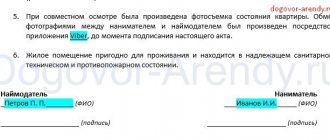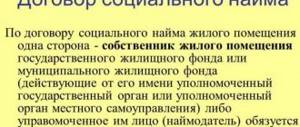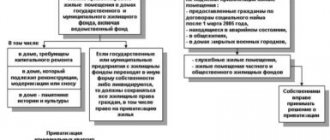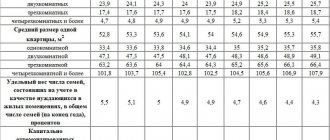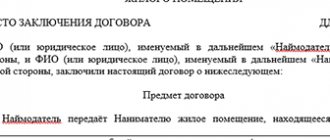Many citizens live in a small living space with entire families. The lack of housing standards per person makes living conditions uncomfortable.
Dear readers! Our articles talk about typical ways to resolve legal issues, but each case is unique. If you want to find out how to solve your particular problem, please use the online consultant form on the right or call. It's fast and free!
Each family member registered in a certain area must have an area to live in, the size of which is based on the legislative framework.
The concept of accounting norms for residential area
The concept of an accounting norm for the area of a residential premises should be understood as the presence of a minimum area of premises for living per one family member. Self-government bodies keep records of living space standards to identify citizens who need to improve their living conditions.
The size of the accounting norm depends on the number of persons living in the residential area:
- One person – the total area of the room is at least 33 square meters.
- Two family members - permissible area of at least 42.
- A family of more than two people requires an area of 18 square meters per person.
In what cases is the norm calculated?
The living allowance is calculated in the following situations:
- To correctly calculate the required payment for living space
- In the event of an eviction procedure for a person renting housing
- When carrying out the procedure for dividing real estate
- In case of renovation of the building itself where the housing is located
- When moving in residents for a temporary period and under certain conditions
- In case of insufficient size of the permissible area for each resident, and when submitting an application for improvement of living conditions.
Text of the Law
1. Residents of the city of Moscow who are recognized as in need of improved housing conditions, recognized as in need of residential premises and recognized as needing assistance from the city of Moscow in purchasing residential premises within the framework of city housing programs are provided with residential premises from the housing stock of the city of Moscow, the area of which is not less than the provision norm , except for cases provided for by this Law.
2. When providing applicants with residential premises, taking into account the size of the area of occupied residential premises, the total area of all residential premises must correspond to the norm for providing the area of residential premises, except for the cases provided for by this Law.
3. The norm for providing living space is 18 square meters of living space per person.
4. The area of residential premises to be provided to citizens jointly accepted for housing registration or registration of those in need of assistance from the city of Moscow in purchasing residential premises within the framework of city housing programs by a decision of the authorized body of the city of Moscow is determined as the product of the number of applicants under this decision and the provision rate per one man. At the same time, the occupancy of one room by persons of different sexes, with the exception of spouses, is allowed only with their consent. The applicants include their minor children living with them, born after filing the application, as well as citizens accepted for housing registration or registration of those in need of assistance from the city of Moscow in purchasing residential premises within the framework of city housing programs, permanently residing at the same address and included in the prescribed manner as part of the same accounting file.
5. Residential premises from the housing stock of the city of Moscow may be provided with an area exceeding the norm for provision per person, but not more than twice, if such residential premises are one room or one-room apartment.
6. Due to the design features of residential premises provided to citizens on the housing register, sent for the implementation of city housing programs, the size of the living area, determined in accordance with Part 4 of this article, cannot be more than: 1) for a family consisting of spouses - a one-room apartment with an area of up to 44 square meters; 2) for a family consisting of two citizens who are not spouses - a two-room apartment with an area of up to 50 square meters; 3) for a family of three citizens, which includes spouses - a two-room apartment with an area of up to 62 square meters; 4) for a family of three citizens, which does not include spouses - a three-room apartment with an area of up to 74 square meters; 5) for a family of four or more citizens - a living space with an area of 18 square meters per family member (the resulting size of the living space can be increased by no more than 9 square meters).
7. Families that include patients suffering from severe forms of certain chronic diseases, the list of which is established by federal legislation, are provided with living quarters that allow such persons to be allocated a separate isolated living space in an apartment for the use of such persons. Requirements for the provision of additional space are not subject to satisfaction if these persons can be provided with a separate isolated living space in the apartment.
8. The rights of citizens who are on the housing register to additional space, established by federal legislation, are applied when providing residential premises under social tenancy agreements or free use to residents of the city of Moscow who are on the housing register, on the basis of their applications and in the presence of documents of the established form, confirming these benefits.
9. Residents of the city of Moscow suffering from diseases of the musculoskeletal system, as well as disabled people, families with disabled children, who, based on the conclusion of medical institutions or in accordance with their individual rehabilitation program, are recommended to live in residential premises that meet the requirements of the individual rehabilitation program, residential premises are provided in specially built houses or residential premises that meet the requirements of an individual rehabilitation program.
10. The demands of citizens, not based on the norms of federal legislation and the legislation of the city of Moscow, for the provision of residential premises in a specific place, house, on the floor, at a specific address, with a certain number of rooms, a certain number of residential premises are not subject to satisfaction.
Types of norms
Indicators for accommodation can be divided into different types. Each type has its own separate terms of use.
The following types are distinguished:
- Residential squares provided in accordance with the rental agreement (provision rate)
- Accounting size of living space
- Social norm
- Sanitary area of housing.
Minimum sanitary standard
This concept is most often used for those types of housing that are temporary. This means living in dormitories, barracks and communal apartments.
Good to know! The concept characterizes the necessary standards for the personal space of a living person, for example, the height of ceilings and the presence of a certain number of windows. The required size of such housing is at least 6 square meters per person.
Accounting norm
It is used to record the availability of those categories of citizens who need improved living conditions and who can apply for additional living space. According to standards, the minimum size of the accounting area per living person is at least 12 square meters. meters.
Let's celebrate! If the family has low-income status and has a living area of up to 14 sq. meters per person, the law provides for the possibility of registering for improved housing.
Presentation norm
It consists of the available minimum area for housing per person when concluding a rental agreement for residential premises. An area of this type must be at least 18 square meters in size. meters.
In case of violation of norms, this may be considered as an infringement of the rights of users of residential space. And may incur administrative penalties.
What living space standards are used in 2020
Referring to housing legislation documents, this is a mandatory minimum square meters that a citizen can claim when drawing up a social tenancy agreement . According to Article 50 of the RF Housing Code, each municipal region has the right to set its own indicator values.
It will be useful for tenants and landlords to familiarize themselves with Article No. 49 of the Housing Code of the Russian Federation “Provision of residential premises under a social tenancy agreement,” part three. The article talks about the norms and procedure for providing housing to tenants under a social tenancy agreement.
Calculation of the accounting standard for living space
The calculation takes into account the available living space per person. It should be noted that the size of the minimum space per person varies in each region. Also, when making calculations, the total area of the room is taken into account.
Good to know! And it is divided by the number of family members. You should pay attention to the fact that the presence of bathrooms and a kitchen should not affect the size of the living space. However, this fact is not always taken into account.
How many square meters of living space are allowed per person?
Rationing of living space began in our country since the times of the USSR. And many of the rules in force at that time are still applicable to practice today. Even after changes, they are simply transferred to new documents. Only the government bodies responsible for editing in a given case change.
We recommend reading: Transactions Subject to Notarization Documents
Classic standards: 18 square meters per citizen, 42 square meters for a family of two, 33 square meters for those who live alone . And enters into a social rental agreement. According to the norm, one person should receive at least 12 squares . But this is only relevant for those who are recognized as in need of improved housing conditions.
Rights and restrictions
The following categories of people have the right to increase living space:
- Children from orphanages
- Disabled people
- People doing military service
- Veterans
- Social workers
- Emergency participants
- People who were forced to relocate due to unforeseen situations.
Good to know! When accounting for living space, only citizens who live in cramped conditions or do not have their own housing are entitled to receive such a subsidy.
When taking into account the size of housing, there are the following restrictions for such citizens:
- Citizens of a foreign country
- Property owners
Also, categories of citizens whose living space has become unusable due to destruction associated with accidents or natural phenomena may be considered out of turn.
Who can get the right to improve their living conditions?
The procedure and conditions for improving housing conditions are set out quite specifically in the Housing Code of the Russian Federation. For example, according to the provisions of Chapter 7 “Grounds and procedure for providing residential premises under a social tenancy agreement” of the Housing Code of the Russian Federation, the following have the right to improve housing conditions:
— Persons recognized as needing assistance and not renting housing under social tenancy agreements, the objects of which are an apartment or house owned by municipal or state property.
— Persons recognized as being in dire need and low-income, taking into account the level of family income and the value of all property owned by family members.
— Persons already renting housing under social rental agreements. Such people have the right to improve their living conditions only when they are not provided with the required living space per family member. When several tenants in a family rent housing on the basis of a social rental agreement, the total total area of rental housing will be determined to calculate the housing minimum per tenant.
— Persons who own emergency households that do not meet the minimum requirements of Russian legislation and are unsuitable for living in them.
- Persons - owners or tenants of residential premises who live in these premises together with people suffering from diseases that make living with them dangerous (this should include intestinal infections that are not subject to drug treatment, persistent mental disorders, severe forms of tuberculosis, oncological formations accompanied by strong discharge, etc.). The list of chronic diseases for which cohabitation is dangerous is prescribed in Government Decree No. 378 of June 16, 2006.
Let us say right away that for those on the waiting list, subsidies for improving housing conditions will be allocated in the form of providing them with square meters in houses of the municipal or state housing stock due to a social rental agreement. It turns out that a person will not be able to become a full owner of real estate. Citizens of other states and persons without specific citizenship cannot count on receiving such assistance. This is the prerogative of Russian citizens only.
Also, single mothers and similar categories of persons classified as socially vulnerable categories of people will have to wait in line for residential square meters on a general basis.
How to join the queue for a new apartment?
In order to apply for inclusion in the housing queue, you must contact your local government. Municipal authorities will carry out calculations of available housing and, in case of non-compliance with the required parameters, will provide the necessary list of documentation.
The application must contain the following information:
- Full information about available housing
- Description of available benefits
- Length of residence at registration address
After submitting the application and all documents, you must apply for funds to purchase a new apartment. After reviewing all the submitted papers, the person will be notified of the decision made by the self-government bodies.
Lawyers advise! When it comes time to receive a certificate for an apartment, a citizen needs to find suitable housing within a certain period of time that will meet all the necessary conditions. If such property is not found, the certificate may expire.
Required documents
In order to obtain an apartment, you must provide the following types of documentation:
- Passports of all family members
- Registration certificates
- Certificate from the tax authorities
- Certificate from the BTI authorities
- Certificate describing the conditions in which the family lives
- Certificate confirming the absence of own real estate
- Certificate of employment
- Certificate of income received
- Work records
- A certificate confirming the possibility of obtaining an apartment.
Good to know! In addition to all the above documents, local authorities may ask for additional information when considering a case.
Who has the right to expand the area?
Citizens who meet at least one of the following conditions have the right to expand their housing:
- Housing does not have sufficient area to meet the required parameters
- The family’s place of residence does not meet sanitary and technical requirements
- In case the house is subject to demolition or is in disrepair
- If several families live in one place of residence
- If the family lives in the same room with a patient suffering from an acute transmissible form
- Persons living in dormitories
You should know that when considering an application for housing, all family income will be taken into account. If a family has sold its own real estate to purchase an existing one with worse conditions, then such persons cannot apply for new housing.
When deciding to apply for new housing or expansion of living space, you must ensure that you have all the necessary certificates. You should also take into account the fact that local governments transfer applications to higher authorities, so the queue can last more than one year.
It is necessary to submit documentation this year for the current year, since a certain amount of funding is provided for one year, which will be spent on this type of social assistance.
Let's celebrate! Getting a new home is a rather complicated procedure that takes a long time. However, this helps many citizens who live in poor conditions improve their housing situation. If a person has the right to receive such a benefit, there is no need to postpone the procedure; all documents should be collected and submitted to local authorities.
Didn't find the answer to your question? Find out how to solve exactly your problem - call right now: +7 (Moscow) +7 (812) 309-53-42 (St. Petersburg) It's fast and free!
1. Standard for the standard area of residential premises used to calculate subsidies (approved by the Moscow City Law of November 1, 2006 No. 54 On the standards of the city of Moscow used in determining the rights of citizens to provide subsidies for the payment of residential premises and utilities
| Family size | The size of the standard standard area of living space |
| 1 person | 33 sq. m of total area |
| 2 people | 42 sq. m of total area |
| 3 or more people | 18 sq. m of total area for each family member |
2. Standard for the cost of housing and communal services. In accordance with the resolution of the Moscow Government dated December 18, 2019. No. 1762-PP “On approval of the size of the cost standard for housing and communal services” from July 1, 2020. In Moscow, 4 types of cost standards for housing and communal services have been established:
- for users of residential premises in the state or municipal housing stock, tenants of residential premises under a lease agreement in a private housing stock and members of housing complexes, housing cooperatives, and other specialized consumer cooperatives before they acquire ownership of such residential premises - standard 1 ;
- for tenants of residential premises owned by the city of Moscow, under a social rental agreement for residential premises and an agreement for the rental of specialized residential premises, who are provided with social support measures for paying for residential premises and utilities, or whose family members are provided with the specified measures - standard 2 ;
- for owners of residential premises who are obliged, in accordance with the requirements of housing legislation, to pay contributions for major repairs of common property in apartment buildings - standard 3 ;
- for owners of residential premises who do not pay contributions for major repairs of common property in apartment buildings in accordance with the requirements of housing legislation - standard 4 .
| Family size | Standard 1 | Standard 2 | Standard 3 | Standard 4 |
| Citizen living alone | 5 120,49 | 4 418,25 | 4 900,38 | 4 278,00 |
| Family of two | 3 946,21 | 3 499,33 | 3 806,14 | 3 410,08 |
| Family consisting of three or more people | 3 659,72 | 3 276,68 | 3 539,66 | 3 200,18 |
Note: If, in addition to the applicant and his family members at the place of residence, other citizens are registered in this residential premises, then the standard for the cost of housing and communal services is applied, per each family member, the number of which is assumed to be equal to the number of all citizens registered in this residential premises at the place residence (regardless of their basis of residence and whether or not they have an independent right to a subsidy).
3. The standard for the maximum permissible share of citizens’ expenses for paying for housing and utilities in the total family income (approved by the Moscow City Law of November 1, 2006 No. 54 On the standards of the city of Moscow used in determining the rights of citizens to provide subsidies for paying for housing and utilities services
| Average per capita income per month | Standard size |
| up to 800 rub. | 0% |
| 800 - 2000 rub. | 3% |
| 2000 - 2500 rub. | 6% |
| over 2500 rub. | 10% |


